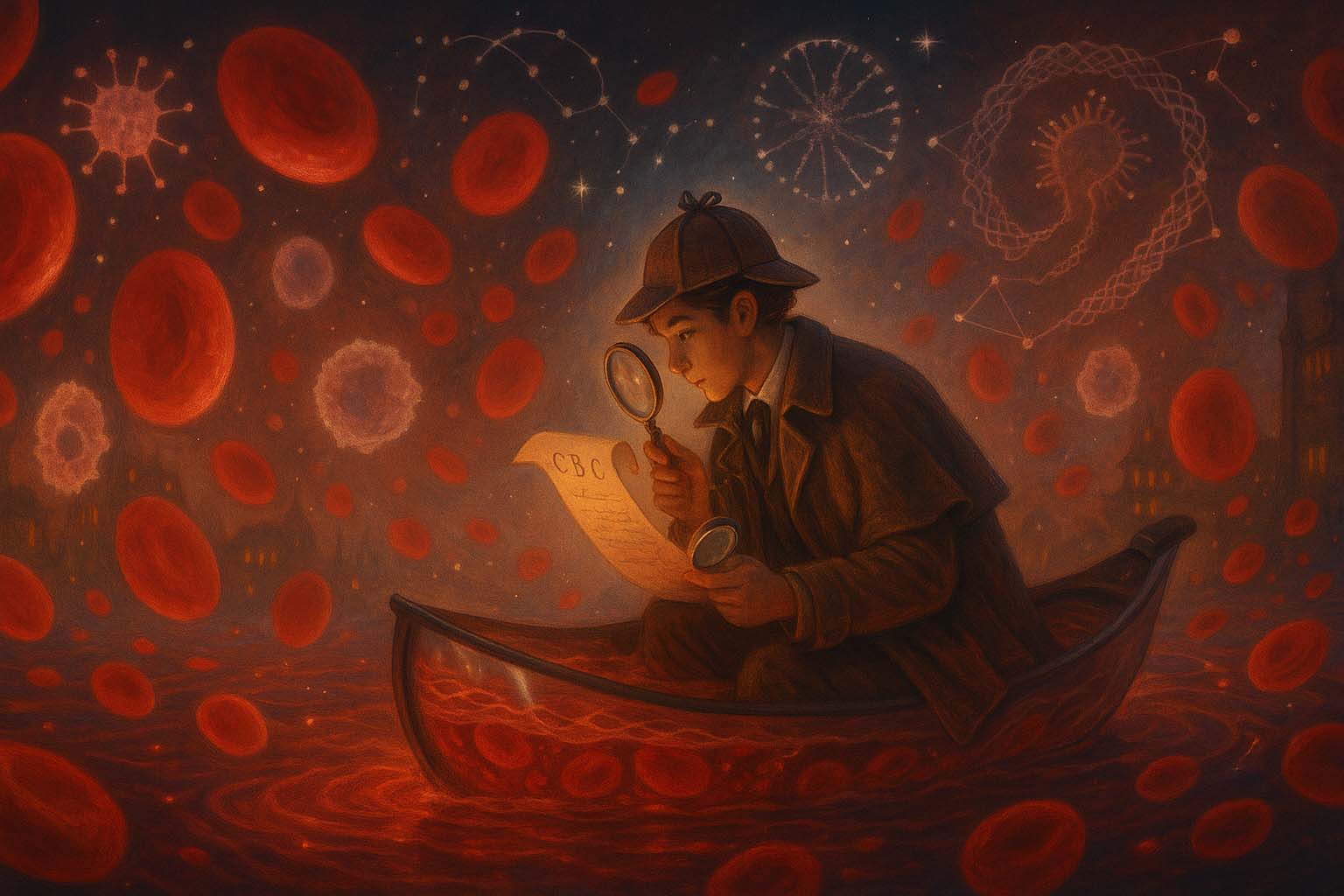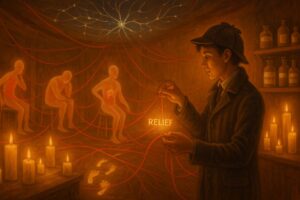
Haematology
- Posted by admin
- Categories Complex & Integrated Medicine
- Date May 23, 2025
- Comments 0 comment
The Blood Detective’s Domain – Cracking the Cases of Clots, Counts, and Cellular Codes
1. Introduction: The Scene of the Specialty
Step into the shoes of a Haematology sleuth.
This is the realm of red cells, white cells, and platelets—a microscopic battlefield where life and death often play out in silence. Haematologists track down disorders of the blood with forensic precision, reading full blood counts like secret codes, and bone marrow slides like confessions. Welcome to a world where a single drop can speak volumes, and the quiet shift of a cell line may whisper of malignancy, deficiency, or cure.
2. Key Mysteries They Solve (Common Conditions)
These detectives specialise in solving cases involving:
- Anaemia & Bleeding Disorders – the everyday clues with surprising causes.
- Leukaemia & Lymphoma – cancers of the blood, often found in unexpected places.
- Thrombosis & Anticoagulation – balancing clotting and bleeding with delicate precision.
- Bone Marrow Failure Syndromes – the slow disappearance of the body’s blood factory.
Each case involves multiple layers—molecular, cellular, systemic, and emotional.
3. Their Trusted Tools & Techniques
Every detective has their kit—and in Haematology, tools may include:
- Full Blood Count (FBC) & Peripheral Smear – the classic entry point for a cellular mystery.
- Bone Marrow Biopsy – where the core truths often lie.
- Clotting Studies & Genetic Panels – exploring both acquired and inherited clues.
- Flow Cytometry & Cytogenetics – deep analysis of cell identity and mutation.
This is detective work at the molecular level—where precision saves lives.
4. The Charms of This Field: Why It Captivates the Curious
- Rich Diagnostic Clarity: Few specialties allow such elegant problem-solving through lab interpretation.
- Procedural and Theoretical Balance: Biopsies, transfusions, and lab-based detective work in harmony.
- Long-Term Care and Cure: From aggressive leukaemias to lifelong anticoagulation and survivorship.
- Impactful Interventions: A correct haematological diagnosis can lead to complete remission—or immediate danger.
This is high-stakes medicine told in drops, slides, and cell counts.
5. Challenges: The Toughest Cases They Face
- Emotional Weight of Cancer Diagnoses – Especially in younger patients with blood cancers.
- Therapeutic Toxicity – Chemotherapy, immunosuppression, and transplant carry significant risks.
- Bleeding & Clotting Balance – Minor decisions can have major consequences.
- Rare Syndromes – From paroxysmal nocturnal haemoglobinuria to aplastic anaemia, zebras abound.
But the experienced haematologist knows: even the most complicated case begins with a single cell—and the story it tells.
6. Famous Cases and Hallmark Clues
- The “Classic Presentation” – Fatigue, pallor, and koilonychia: iron-deficiency anaemia.
- The “Zebra” – Young patient with thrombosis and no risk factors: antiphospholipid syndrome.
- The “Aha Moment” – Leukaemic blasts on a peripheral film that explain a month of unexplained fevers.
7. Your Training Trail: How to Join the Investigation
To become a Haematology detective:
- Build a strong foundation in internal medicine—most haematological issues present there first.
- Learn to interpret lab results in depth—trends, patterns, and outliers are everything.
- Train in oncology, immunology, and transfusion science.
- Develop skills in communication—many patients face long journeys through complex, life-altering diagnoses.
Whether adjusting warfarin, initiating chemotherapy, or diagnosing a rare anaemia, you’ll need both technical acumen and compassionate clarity.
8. Final Words: The Signature of the Haematology Detective
Haematology detectives read the messages carried in blood.
They see beyond the numbers to the story beneath—a cancer’s first signal, a clot’s quiet threat, a marrow’s cry for help.
They balance treatment and tenderness, speed and subtlety, science and humanity.
So if you’re drawn to quiet precision, deep pattern recognition, and cellular storytelling—
then this is your casebook of crimson clues.



